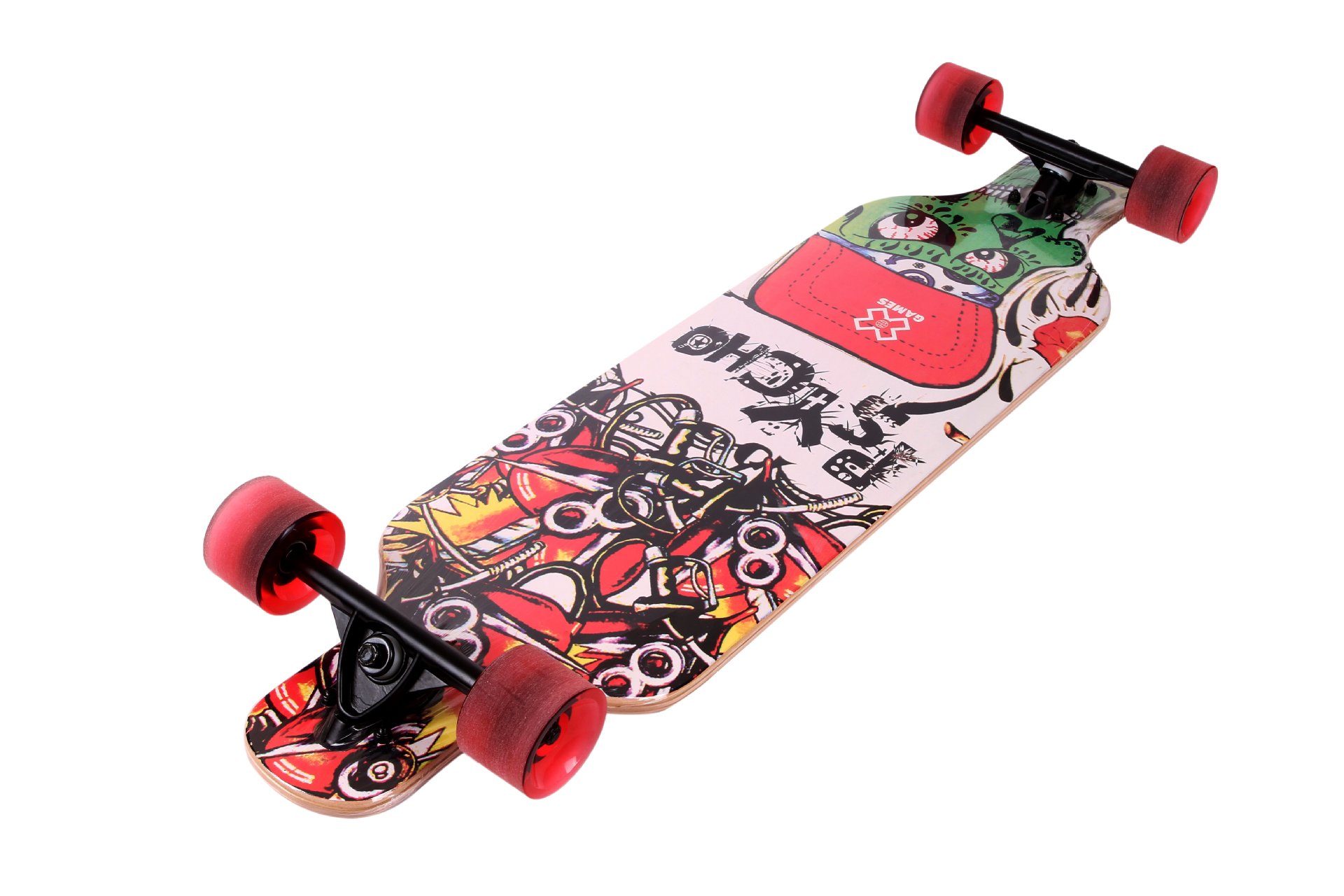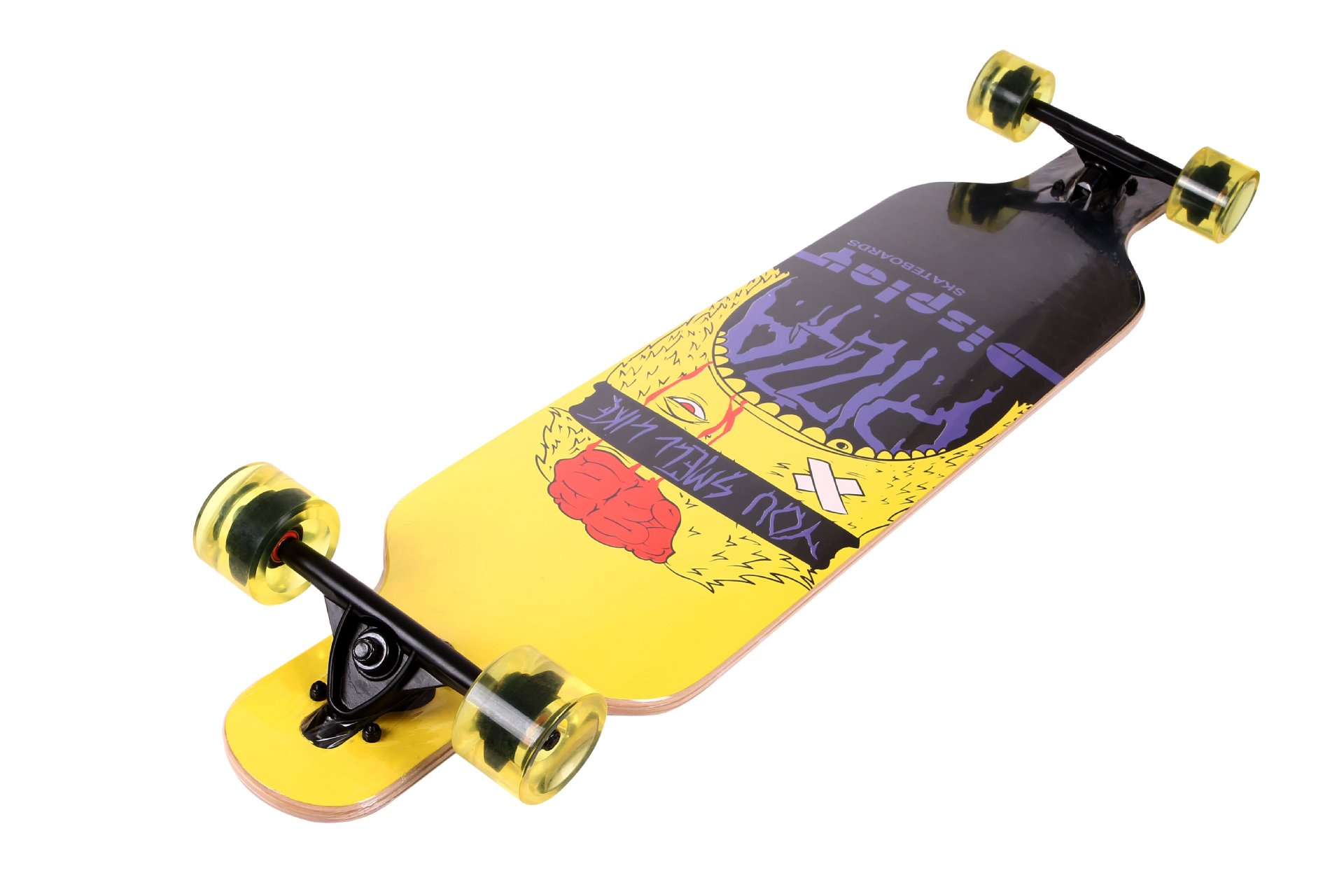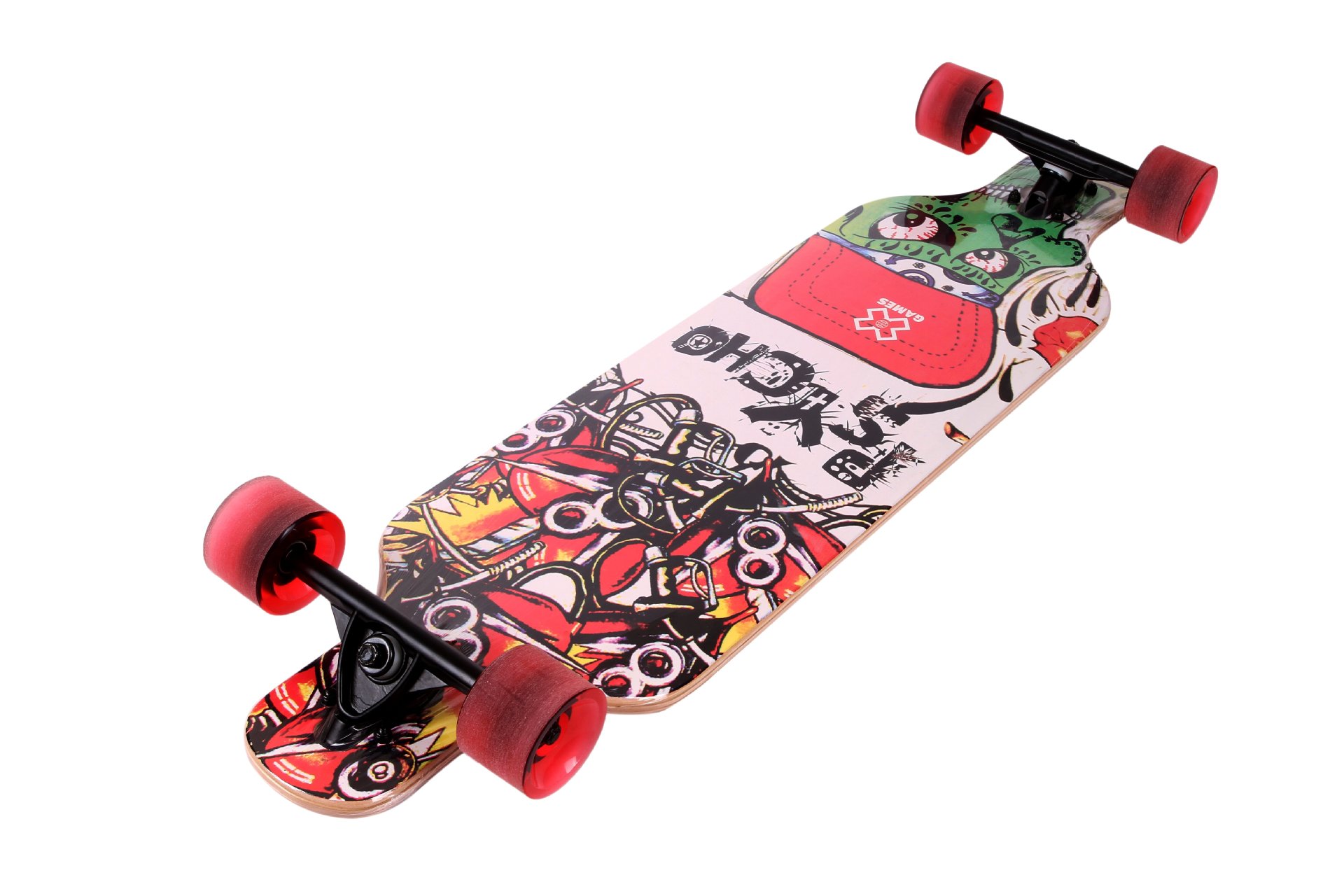The deck is the most important part of a skateboard. The choice of deck has a significant impact on your skateboarding performance. So, which deck is the best? It depends on your needs. Do you need to ollie high? Or do you want to slide well? Or are you looking for the most durable? Let's take a look at some criteria for choosing a skateboard.
Skateboard Structure
The shape of a skateboard. This is one of the most commonly used criteria when selecting a skateboard. When choosing the shape, many factors need to be considered. Length, width,
板头Length, tail length, and bridge distance. Most skateboards have widths between 7.5 inches and 8 inches. Some are narrower or wider, but most vary by no more than half an inch. It's best to get familiar with the "inch" unit because most skateboard decks sold in markets and online are measured in inches. It's cumbersome to convert each one to centimeters.
In terms of durability, there is no absolute advantage for any one board. Most boards are made of 7-ply wood, which is composed of 7 thin layers glued together. Some companies claim that their boards are very light, which is mostly due to using thinner wood, fewer layers, or cross-grained gluing of the thin boards. These methods make your board slightly lighter, but they also make it slightly more fragile. Some companies even add more layers or increase the size of the board's grooves to increase the board's durability.
Some companies adopt different approaches or innovations in the construction of their boards. For example, Flip's "New Wave Construction" patent technology adds a layer of wavy hard strips to the surface of the board to enhance its performance. Real Company uses the "Triple Beam Construction," which consists of seven layers of laminate, with three layers being cross-laminated. This significantly increases the board's elasticity and durability.
Price Specification
Under normal circumstances: The marked price: The marked price may be the sales guideline price of the commodity or the commodity's previously displayed sales price, etc., which is not the original price and for reference only.
Unstriked Price: The unstriked price is the sales price of the product on Alibaba China. The specific transaction price may change due to participation in activities or the use of coupons by users, and the final price is determined by the order settlement page.
Activity Preheating State: Striked Price: The striked price is the sales price of the product in the current activity preheating state, which is not the original price. The specific transaction price may change due to the use of coupons by users, and the final price is determined by the order settlement page.
Unstruck Price: The unstruck price may be the activity price of the goods about to participate in the activity, for reference only. The final transaction price at the time of the activity may change due to the use of coupons by users, and the final price shall be subject to the price on the order settlement page of the activity. *Note: The preceding explanation is only effective when there is a price comparison. If the merchant makes a separate explanation for the struck price, the merchant's statement shall prevail.
Price Specification
Under normal circumstances: The marked price: The marked price may be the sales guideline price of the commodity or the commodity's previously displayed sales price, etc., which is not the original price and for reference only.
Unstriked Price: The unstriked price is the sales price of the product on Alibaba China. The specific transaction price may change due to participation in activities or the use of coupons by users, and the final price is determined by the order settlement page.
Activity Preheating State: Striked Price: The striked price is the sales price of the product in the current activity preheating state, which is not the original price. The specific transaction price may change due to the use of coupons by users, and the final price is determined by the order settlement page.
Unstruck Price: The unstruck price may be the activity price of the goods about to participate in the activity, for reference only. The actual transaction price at the time of the activity may change due to the use of coupons by users, and the final price will be determined by the order settlement page of the activity.
* Note: The preceding explanation is only valid when price comparisons are made. If the merchant makes a separate explanation for the strikethrough price, the merchant's statement shall prevail.











